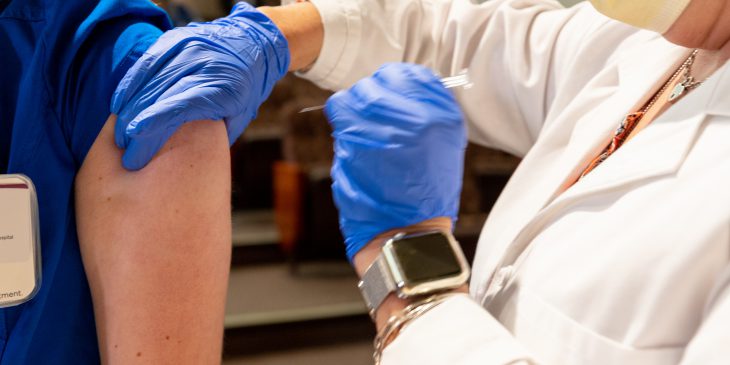With three promising COVID-19 vaccines expected to be approved soon, UPMC is coordinating internally and with colleagues at the state and federal levels to distribute the vaccines to the communities it serves. UPMC and other health care providers will receive allocations of each vaccine when they become available.
“It’s exciting to see the unprecedented speed at which these vaccines were developed,” said Dr. Graham Snyder, UPMC’s medical director of infection prevention and hospital epidemiology. “We are eagerly anticipating the additional data we need to craft an equitable distribution strategy in conjunction with our government partners.”
Snyder noted that more data is needed on the safety, effectiveness and durability of each vaccine. For example, a vaccine’s effectiveness in elderly populations, its ability to prevent the transmission of disease and whether it protects people long-term will determine how it is administered to protect the most people — especially when initial supplies will be limited.
“Our annual flu vaccination efforts have helped us put the infrastructure in place for mass vaccination events,” said Snyder. “We are used to navigating the varying transportation and storage requirements, handling protocols and distribution plans that come along with all types of vaccines.”
Earlier this fall, UPMC practiced rapidly administering the influenza vaccine through “Operation One Shot,” an emergency preparedness initiative that successfully vaccinated over 70% of UPMC staff at participating hospitals in a matter of days.
With at least one of the COVID-19 vaccines requiring storage at incredibly low temperatures, Snyder emphasized that existing deep freezers across the UPMC system are ready for the vaccine’s arrival. UPMC will explore the need for additional freezers once it determines how much of this vaccine UPMC is allocated.
“The coronavirus vaccine landscape is changing rapidly, but we are preparing to the best of our abilities with the information we have,” said Snyder. “We look forward to playing a role in protecting our health care workers and the communities we serve when vaccines become available.”









